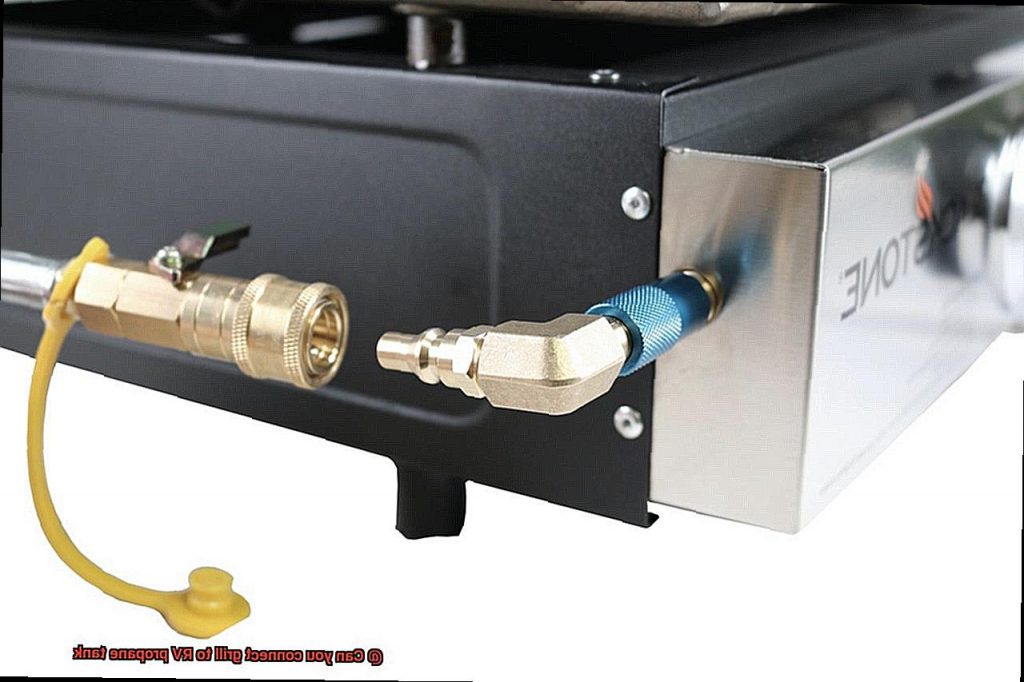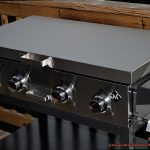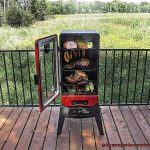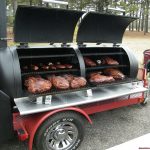Imagine waking up in the great outdoors, breathing in the fresh morning air, and catching a whiff of bacon sizzling on the grill. You’re ready to whip up a delicious breakfast but find out that your propane tank is empty. Don’t panic.
The good news is that if you own an RV propane tank, you can connect your grill directly to it and never worry about running out of fuel again. But before you start grilling away, there are a few things you need to know.
This blog post is your ultimate guide on how to connect your grill to an RV propane tank. We’ll cover everything from propane connection types and RV tank options to safety measures to ensure a safe camping trip.
Whether you’re a seasoned camper or new to the game, this post has got you covered with step-by-step instructions and answers to all your burning questions about connecting a grill to an RV propane tank.
So get ready for hassle-free camping and let’s dive into all the essential information on how to make your outdoor cooking experience even better with a simple propane tank grill connection.
Contents
What Is an RV Propane Tank?
These portable tanks hold propane gas and are designed to supply propane to appliances in your RV like stoves, ovens, and heaters. RV propane tanks come in different sizes ranging from 20 pounds to 100 pounds and are typically made of steel or aluminum.
One major difference between an RV propane tank and a propane tank used for grilling is the size and connection. An RV propane tank usually has a threaded connection that allows it to be connected to the RV’s propane system. Conversely, a propane tank used for grilling typically has a quick-connect fitting that makes it easy to connect it to a grill.
It’s important to note that not all RVs come equipped with a propane tank. Some may require the purchase and installation of a propane tank before being able to use propane-powered appliances. Also, be sure to follow proper safety procedures when handling and using propane tanks to prevent accidents and injuries.
If you’re an avid RV enthusiast who enjoys cooking outdoors, you might wonder if it’s possible to connect your grill to your RV propane tank. The answer is yes. Before you attempt this, here are some things you need to keep in mind.
Firstly, check if your grill is compatible with the pressure and fittings of your RV propane tank. Most modern grills come with a regulator that reduces the propane pressure to a level that is safe for the grill. However, some older or cheaper grills may require an adapter to connect them to the propane tank.
Secondly, ensure that the connection between the propane tank and the grill is secure and leak-free. This can be done by using high-quality equipment specifically designed for use with an RV propane tank. Check for any cracks or damage in the hose or regulator before connecting them to the propane tank.
Lastly, safety should always be a priority when using propane gas. Keep your grill away from any flammable materials and never leave it unattended while in use. It’s also recommended to have a fire extinguisher nearby in case of emergencies.
Can You Connect a Grill to RV Propane Tank?
The good news is that it can be done safely and easily with the right equipment and techniques.
First, make sure your grill is compatible with propane. While most grills are designed to run on propane, some may require additional equipment or modifications. Check the owner’s manual or manufacturer’s website for information about your specific grill.
Once you’ve confirmed compatibility, you’ll need a propane hose and regulator that are designed for use with an RV propane tank. These can be purchased at most hardware stores or online. It’s crucial to choose a hose and regulator that are compatible with both your grill and RV propane tank.
Now it’s time to connect everything. Follow these steps:
- Turn off the propane tank valve.
- Remove the old regulator from your grill.
- Connect the new hose and regulator to your grill according to the manufacturer’s instructions.
- Attach the other end of the hose to the RV propane tank, making sure to tighten all connections securely.
- Turn on the propane tank valve slowly and check for leaks using a solution of soap and water.
- Once you have confirmed that there are no leaks, ignite your grill according to the manufacturer’s instructions.
It’s important to note that connecting a grill to an RV propane tank requires basic knowledge of propane safety. Always read and follow the manufacturer’s instructions for your grill and propane equipment, and never attempt to modify or repair any parts yourself unless you’re properly trained.
Additionally, ensure that you store your propane tank in a secure location while traveling and never use a damaged or expired tank. Finally, always practice safe grilling techniques such as keeping your grill away from flammable materials and never leaving it unattended while in use.
Benefits of Connecting Grill to RV Propane Tank
This simple switch can provide you with a host of benefits that truly enhance your camping and cooking experiences.
Firstly, by connecting your grill to an RV propane tank, you get convenience at its best. No more worrying about running out of fuel or carrying additional propane tanks with you when you go camping. With a ready-to-go fuel source right there in your RV, you can grill to your heart’s content without any hiccups.
Moreover, it is a cost-effective option that helps you save money in the long run. Propane tanks for grills can be expensive and require frequent refills, which can be inconvenient when camping in remote areas. However, by using your RV’s propane tank instead, you can save money on propane costs and reduce your carbon footprint by using fewer disposable propane tanks. It’s a win-win situation for both you and the environment.
In addition to cost savings and convenience, connecting your grill to an RV propane tank ensures a more consistent gas supply. This means that your grill will have a more stable heat source resulting in better cooking performance and tastier food. Imagine juicy burgers and perfectly grilled veggies every time you whip up a meal.
Furthermore, connecting your grill to an RV propane tank allows you to save precious space in your RV. Instead of carrying multiple propane tanks for different appliances, you can use one tank for everything. This not only reduces clutter but also frees up valuable storage space, especially for those traveling with smaller and more compact RVs.
What to Consider Before Connecting Grill to RV Propane Tank
Grilling is a quintessential part of the RV experience, but before you start cooking up a storm, it’s essential to consider a few key factors when connecting your grill to your RV propane tank. Here are five sub-sections to consider:
Check Your RV Propane System
Before connecting your grill to your RV propane tank, ensure that your propane system can handle the added pressure and demand of a grill. While most RVs are equipped with propane tanks and regulators that can accommodate multiple appliances, it’s always best to confirm before making any connections.
Use Proper Hoses and Connections
Using the proper hoses and connections is crucial when attaching your grill to the RV propane tank. The hoses must be rated for propane use and be long enough to connect from the RV’s propane outlet to the grill. It’s also essential to use a proper regulator, as most grills operate on high-pressure propane while RV propane systems operate on low-pressure propane.
Consider the Grill’s Size and Type
Different grills have different requirements for fuel pressure and flow rate, so it’s important to ensure that your RV propane tank can meet these requirements. Also, larger grills may require a larger or more powerful propane regulator than what’s included with your RV propane tank.
Position the Grill Safely
It’s critical to consider the location of the grill in relation to the RV. The grill should be positioned in a well-ventilated area away from any flammable materials, such as awnings or dry brush. And never use the grill while the RV is in motion. Always make sure that your grill is positioned away from any flammable materials or surfaces, and never leave your grill unattended while it’s in use.
Regularly Check for Leaks
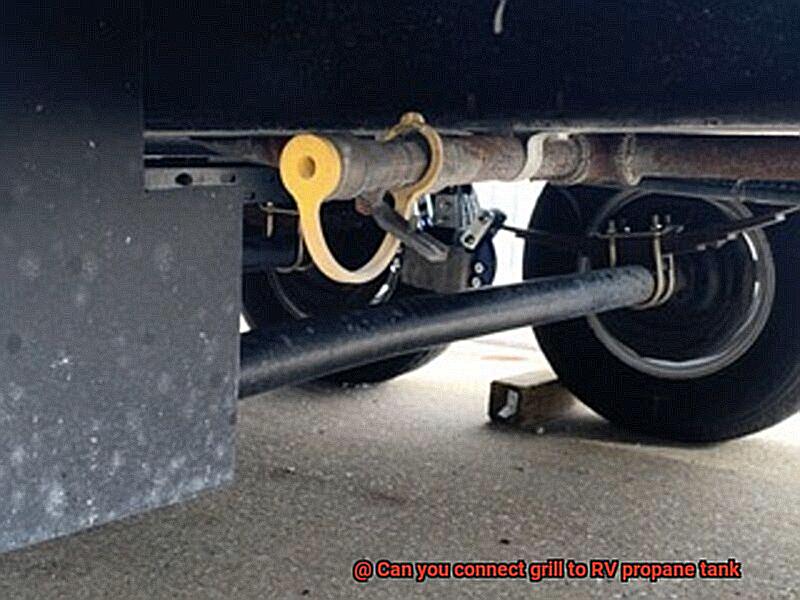
Lastly, it’s essential to regularly check for leaks in the propane system and ensure that all connections are secure. Leaks can cause potentially hazardous situations, so it’s vital to take all necessary precautions before connecting a grill to an RV propane tank.
How to Connect Grill to RV Propane Tank
Grilling while camping is one of the best ways to enjoy the great outdoors. And if you’re an RV owner, you can make it even more convenient by connecting your grill to your RV propane tank. However, it’s important to follow some essential steps to ensure that the process is safe and hazard-free.
Check Compatibility
Before connecting your grill to your RV propane tank, it’s crucial to check compatibility. Ensure that the grill’s pressure and fittings are compatible with the RV propane tank. Most modern grills come with a regulator that reduces propane pressure to a safe level. But if you have an older or cheaper grill, it may require an adapter to connect to the propane tank.
Get the Right Equipment
Once you have confirmed compatibility, it’s time to get the right equipment. A high-quality hose and regulator designed for use with an RV propane tank are necessary. You can find them at most camping or outdoor stores and online retailers.
Turn off Propane Tank
Before starting any work, turn off the propane tank and disconnect it from the RV’s propane system. This step is crucial for safety reasons.
Attach Propane Hose
Attach the propane hose to the connection on your grill securely. Make sure to tighten it with a wrench.
Connect Hose to Propane Tank
Connect the other end of the hose to the RV propane tank by removing the plastic cap from the propane tank’s connection valve. Then attach the hose to the valve and make sure all connections are secure.
Check for Leaks
After connecting the hose, turn on the propane tank and check for leaks by applying soapy water around all connections. If there are any bubbles, turn off the propane tank, and tighten any loose connections.
est Your Grill
Finally, test your grill by igniting it and checking that it is heating up correctly. If everything is working fine, you’re all set to start grilling.
Safety Precautions When Using an RV Propane Tank
While grilling is a fun and delicious activity, it’s crucial to prioritize safety when handling propane tanks. Here are some essential safety precautions to take before firing up your grill.
Firstly, it’s crucial to check for any leaks in the propane tank before connecting it to the grill. Leaks can pose significant safety risks, so it’s essential to perform a quick test before use. Apply a soapy water solution around the connections and valves of the tank. If bubbles form, this indicates a leak, and the tank should not be used until it has been repaired or replaced.
Secondly, ensure that both the propane tank and the grill are in well-ventilated areas. Propane gas is flammable and can cause an explosion if not handled properly. Use your grill outdoors in an open space away from any combustible materials to minimize potential hazards.
Thirdly, make sure that all connections between the propane tank and grill are secure and tight. Loose connections can lead to gas leaks, which can be hazardous. Give each connection a gentle tug to test if it’s secured correctly. If it moves easily, it needs further tightening.
Fourthly, always turn off the propane tank when not using it. Turning off the tank prevents accidental leaks or gas build-up, which can be dangerous. Remember to also turn off the grill’s burners after use.
Lastly, have a fire extinguisher nearby when using an RV propane tank connected grill. In case of any emergencies, having a fire extinguisher can help prevent a small fire from escalating into a larger one. Ensure that everyone knows where the fire extinguisher is located and how to use it.
Kbp4LiOjXbI” >
Conclusion
In conclusion, connecting your grill to an RV propane tank opens up a world of possibilities for outdoor cooking enthusiasts. Not only is it a convenient and cost-effective option, but it also offers unparalleled cooking performance with a stable heat source.
However, before you dive into this process, it’s crucial to follow some essential steps and safety precautions to ensure a hassle-free experience. First and foremost, make sure that your propane system can handle the added pressure and demand of a grill. Use proper hoses and connections rated for propane use, and consider the size and type of your grill.
Safety should always be your top priority when handling propane tanks. Position the grill safely away from any flammable materials or surfaces, regularly check for leaks in the propane system, and always turn off the propane tank when not in use.
By using your RV’s propane tank instead of carrying multiple tanks for different appliances, you can save money on propane costs while reducing your carbon footprint by using fewer disposable tanks.

